
April 7, 2011
Health for Sale
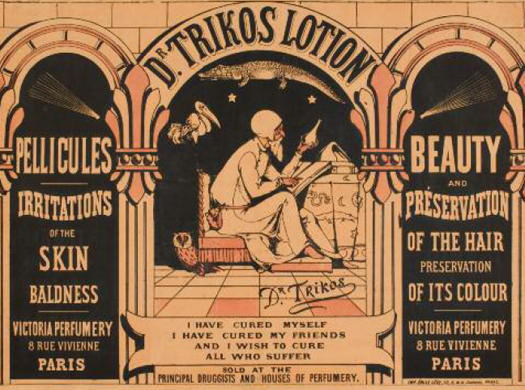
Dr. Trikos Lotion, attributed to Émile Lévy (French), c. 1880. Lithograph with color stencil
An abridged version of an interview with William H. Helfand by Innis Howe Shoemaker of the Philadelphia Museum of Art from the catalogue for the exhibition Health for Sale: Posters from the William H. Helfand Collection (2011). The exhibit runs through July 31.
Innis Howe Shoemaker:
Bill, you’ve been on our Prints, Drawings, and Photographs Committee since its beginning in 1967. I’d love to know, how did you begin collecting?
William H. Helfand:
I began collecting as a result of a course I took at the Barnes Foundation when I was in my final year at the Philadelphia College of Pharmacy [now the University of the Sciences]; I had previously received a degree in chemical engineering from the University of Pennsylvania. The Barnes accepted me as a student primarily because I knew nothing about art at the time, and I wanted to make up for my complete lack of understanding. Their course was intended to enable the students to understand and appreciate art. I had a scheduled class in bacteriology on the Tuesdays, but I preferred going to the Barnes, so I never actually attended a single session of that course — which I nonetheless passed through the kindness of a friend who gave me his notes to study.
IHS: How old were you then?
WHH: This was in 1951. I would have been twenty-five, single, finishing my education. The Barnes experience made me want to become an art collector myself, but of course I couldn’t afford any significant paintings, so I began to collect prints. My initial acquisitions came exclusively from the Print Club on Latimer Street in Philadelphia. Bertha von Moschzisker was the director and she sold me the first prints I acquired. They were primarily by Piranesi and Renoir, and there was even a Manet. Then one day in 1955 or 1956, after I had begun working for the pharmaceutical company Merck, I noticed an etching in a catalogue from Elkin Mathews, the British book dealer. It was a 1772 caricature of a military pharmacist, and it was called The Chymical Macaroni. I bought it for five pounds, and I liked it very much, so I began to ask myself if there might be any more prints dealing with medical, pharmaceutical, and related subjects. I’ve been looking ever since, and after more than fifty years I still am able to find objects I never knew existed.
IHS: Did you immediately start buying more after you got that first print?
WHH: After I reflected upon it and asked the dealer if there were other similar prints, I did begin to buy more. I remember visiting Walter Schatzki, the antiquarian bookseller in New York, who had been recommended to me. I looked at the checks I had written then, but although I couldn’t find the check for The Chymical Macaroni, I did find checks written to Walter Schatzki. These would have been written sometime afterward, indicating that I purchased The Chymical Macaroni in 1955 or 1956. I still have this print. I’ve never seen another copy anywhere, except in the British Museum.
IHS: Is that right? So I guess soon afterward you must have been hooked, as a collector?
WHH: Well, I found so many wonderful things. I acquired the names of two collectors of medical prints and wrote to them asking for information on possible sources. One was in Paris, Maurice Bouvet, who wrote back a letter that I still have saying that I was thirty years too late. He had accumulated a wonderful collection of prints about pharmacy and medicine — almost all French — that is now a public collection in Paris [the Ordre National des Pharmaciens on avenue Ruysdaël]. Another print collector to whom I wrote was the Canadian pediatrician Theodore Drake. His wife wrote back saying that Drake had just died, but she referred me to an article he had written about his prints that was published in the Journal of the History of Medicine. She also kindly gave me the names of a few dealers that he had frequented, one of whom was the British dealer Walter T. Spencer. Schatzki and Spencer were the first people who helped me build my collection. Then later I learned that the Philadelphia Museum of Art was assembling a collection of medical prints, which was a total surprise. I made an appointment to see the head of the Print Department, who was then Ding [Kneeland] McNulty, and I told him what I was doing. We eventually became very good friends and did what we could to continue supporting the collection, and I’ve been involved with the Museum’s Ars Medica Collection ever since.

The Chymical Macaroni, Capt. Ludgate, Garnett Terry (British), 1772. Etching
IHS: How did you educate yourself as a print collector? Was it through trial and error?
WHH: Early in my career as a print collector, when I knew precious little, my wife Audrey and I were invited to a dinner party at the home of the printmaker Jerry Kaplan and his wife, Anne. I met his colleague Benton Spruance there and told him that I had begun to collect prints. He invited me, whenever I had the time, to come to a class on the history of prints and their appreciation that he was giving to women students at Rosemont College. The course was held at Alverthorpe, Lessing Rosenwald’s home and gallery, which housed his collection of prints and illustrated books and was not far from Rosemont. Thereafter, whenever I could, I told my secretary that I had an important meeting to attend and would not be back for the rest of the afternoon, and I would go to the sessions at Alverthorpe.
IHS: When you joined the Print Committee in 1967 you already had more than 400 prints in your collection, according to the record.
WHH: I now have 7,500 prints in the collection. But I confess that a lot of them are not too significant. Some are more illustrations than they are prints.
IHS: It sounds as though you may actually have had more than 400, counting ephemera.
WHH: In the beginning I did not have much ephemera. I had some, but my interest in it grew later on. The ephemera I’ve had over the years have included many postcards and related small objects that, if counted, would make the collection much larger but would not indicate anything that significant. I catalogued some of the more important objects, but not the majority.
IHS: When did you begin to veer toward popular prints?
WHH: I suppose when I first saw them in the print shops. Walter Schatzki may have had some, but I never found much of the imagerie populaire you’re speaking about until I began to go to France and then lived in Paris, after which it was much easier to find them.
IHS: By “popular” I also meant the posters and the advertising.
WHH: The advertising was part of the ephemera. I’d say it must have been by the mid-1960s that I started collecting ephemera, after I had begun with the prints. The posters did not really begin until late 1969. I had joined the international division of Merck one year before and later was sent to France to be the president of Merck’s subsidiary there. On my first visit to take up my new position, in late 1969, I bought my first pharmaceutical poster. I had acquired a few posters about World War II before that.
IHS: Nonmedical?
WHH: They had nothing to do with medicine. The first medical one would have been purchased in 1969 from a poster gallery, the Galerie Documents, on the rue de Seine in Paris. It was Sirop Vincent, by Jules Chéret, and I still have it hanging in the living room of my apartment. By being in France I was able to find many more posters than I would have been able to find in the United States at the time.
IHS: Did you worry about the scale?
WHH: I worried about what I was going to do with them. But of course collectors don’t really ask, “Where am I going to put this?” or “Is there any room for it?” I remember bringing the first one home, and my wife said to me, “Well, that’s great. We can hang it.” And we did hang it, so it was not a question of where to store it. But later, when I began to acquire more posters, I really had no room, and I had to store them rolled up. I remember that after an exhibition of more than sixty of my medical posters in Albany, New York, I gave most of the works in the show to the Museum. Giving them to the Museum made storage your problem, not mine, and that was good for me.
IHS: That was the first thought I had: if you have this many posters, what are you going to do with them in a small space?
WHH: Well, when I got the first poster we had a home in Princeton, New Jersey, so we had more space than in an apartment. I did not buy any more posters until we moved to France in early 1970. The whole family moved, and we lived there for four and a half years. I remember writing my first article about the posters in a French journal, the Revue d’histoire de la pharmacie, and giving my first talk about the posters to a French audience. The projectionist at the talk I gave was somewhat astounded by the objects I showed. He was the son of Louis Cotinat, who was a major collector of ceramics. The son soon began to buy posters, and within two or three months he had acquired more posters than I had because his father knew all the places to go.
IHS: Did they let you in on any of their sources?
WHH: I never asked. I had good friends in Paris, many of whom were collectors. They were the first French friends that Audrey and I made there, and one of them, Pierre Julien, became a very close colleague. He had a medical-print collection that I eventually acquired a few years ago, after his death. I never asked him for sources. I always felt that was a no-no subject. But there’s one anecdote: I spent at least one day with Pierre Julien every year for the thirty-some years we knew each other, and one day, about five or six years ago, I asked him if he had any ex-votos [votive offerings]. I had begun to look at ex-votos, objects that were made mostly in Europe and Latin America. Pierre smiled and showed me some: there were two on a wall of his library and a lot of smaller ones in a drawer. I asked him, “Well, where did you find these?” I said, “I’m not asking what specific place, but was it a gallery, was it a bookstore, was it through the mail, where was it?” He smiled again and said that he and his daughter had been to Spain, where they found them next to a trashcan in a church and took them. Well, this was little help for me. But that’s the only time I even came close to asking where, so I never learned their sources. And of course they knew places I didn’t know, although I found enough sources for prints in Paris, in both shops and flea markets.
IHS: Did you have any favorite places where you found things in Paris?
WHH: When I lived in Paris, there were print dealers all around the rue de Seine. The poster gallery was there. Paul Prouté was there. Other than Prouté, from whom I bought a number of prints, I don’t remember any specific places, but there was another shop from which I bought many prints. The woman who managed it later moved near the Hôtel Drouot, where I still see her.
IHS: Were the French dealers different from the American dealers?
WHH: The French had several dealers who organized their objects by theme or subject, and some still do. American print dealers do not arrange their holdings that way. They have their prints organized by artist and period — American versus European — so that it’s relatively simple to find the work of a specific printmaker.
Sirop Vincent (Vincent Syrup), Jules Chéret (French), 1903. Color lithograph
IHS: Recently I read that early American posters were made by commercial companies and that there was not much interest in the artists who made them — as, say, there was in France. So that would make finding what you want even harder, I would think.
WHH: It does. The poster dealers are better able to deal with this issue than the print dealers, frankly. They might not categorize by subject, but if you go to a poster dealer, or to a poster fair — and both New York and San Francisco have them — and ask for medical subjects, they usually remember what they have. But of course there are many objects that a serious searcher would consider to be in that field that they would not.
IHS: Yes.
WHH: That’s always a problem. For example, right now I’m working on a paper that has to do with the presence of a stuffed animal hanging from the ceiling in some prints depicting pharmacies and alchemists’ laboratories. It’s not a very important aspect of the prints, but I find I have a number of examples showing these animals. I recently visited the Chemical Heritage Foundation in Philadelphia to look at their prints, and the librarian had very kindly pulled out and made photocopies of the prints and paintings that she saw had these animals in them. Then later we went to look at an exhibition at the foundation, which included a caricature from Puck, the American magazine, called “The Alchemist of the Past, and The Alchemist of the Present” by Friedrich Graetz [1884], and it had one of these stuffed animals, but she hadn’t noticed it. Similarly, if I go to print dealers and tell them the subject matter I’m interested in, they might think they have nothing to offer, but I’ll look through their prints and find something.
IHS: So you really have to do the searching yourself.
WHH: Yes. A year ago at a book fair — lately I’ve found prints from dealers at antiquarian book fairs — a Dutch dealer from Utrecht from whom I had bought some objects previously said, “I have nothing.” I said, “Let me look through your popular prints,” and I found a very early Dutch example of imagerie populaire that she hadn’t thought of. So it happens.
IHS: Did you buy things as you traveled around or mostly when you were living in different cities?
WHH: A major way of finding objects was when I traveled. I was employed in the international division of Merck for sixteen years, and there was a lot of travel involved. Whenever I would go somewhere I would try to find at least one day for myself. It wasn’t always possible, but if it was, I would go to see the dealers, or go to places where there might be prints available.
IHS: Did you ever find anything in some odd place?
WHH: Oh sure. This is true more of ephemera than it is of prints. For example, there are patron saints in different medical fields, and the patron saints of pharmacy and medicine are Cosmas and Damian. One day in Rio de Janeiro, in late September, I was taking a walk along a street with a group of shops that had set up tables outside and stocked them with sale merchandise. On one of them I noticed paper cups and paper plates with images of two saints on them. It seemed odd to see two saints, so I asked in my immature Spanish who they might be. The shopkeeper said they were Cosmas and Damian, so I bought everything he had that included portraits of these saints. Later, in Sao Paolo, where Merck’s offices were, I asked the managing director of the Brazilian company why the saints were there, and he told me that in Brazil these saints were the patron saints of children, not medicine, and that Bahia was the key place that celebrated their birthday, which was September 27, just a few days before I had discovered the cups and plates. In other words, the shopkeeper had tried to sell these items on the saints’ natal day, but he couldn’t do it, so they were a bargain when I bought them. I then said to the director, “Next year on their birthday I want you to ask your sales representative in Bahia to find every inexpensive item he or she can that celebrates them — and to buy two of each. Put them in boxes, and mail them to me. I’ll pay you for everything.” He did this, and I then gave one of the boxes of flashlights, memo pads, and similar trinkets to Pierre Julien, my friend in Paris. These saints were Pierre’s major passion — he had written a book about them — and he later published a paper about the Cosmas and Damian trinkets.
IHS: That’s great.
WHH: That sort of experience happened many times — you walk in strange places and you find strange things. Bookshops were always good for something.
IHS: There’s been a definite connection between your work in marketing and advertising and the kind of art you collect, don’t you think?
WHH: Well, one of the reasons I got into the world of prints is that I was involved in the marketing and selling of drugs, and I’ve always had a feeling in my heart that the people in the past who did this were my figurative ancestors, if you will. This led to a great interest in the selling of medicine. One of the exhibitions we had here at the Museum, which was preceded by one at the Grolier Club, was on images of quacks and quackery and the literature about them. These men and women, even though they were not professionally trained, were interested in marketing and selling their brands, and they would at times concoct wild stories about them, almost always not true. But these were the people who preceded me and the work I was doing. I tried to be totally honest in my approach — more than they were. The company wouldn’t have permitted me to be otherwise.
IHS: What can you tell me about the market for this kind of material now?
WHH: Like everything else, it’s changed. Things have become rarer and more difficult to find, but it’s also the fact that I now have a large collection. If I come across a print or a poster that I have not seen before, that is germane to the collection, I know it’s rare, and normally I would want to have it and would probably acquire it no matter what its cost. But the problem with a collector who has been at it for more than fifty years, as I have, is that if I see something that once was $50 and is now $5,000, I have to balk a little bit. In looking through the Elkin Mathews catalogues for the first print I bought in the mid-1950s, the prices of all the items listed seem absurdly low now, of course, but finances were different then. So there’s been an escalation, and fortunately for me I have most of the easier-to-find things, which did not have a great cost attached to them.
I remember at Walter T. Spencer in London, one of the main sources for me in the beginning of my collecting, there was a lovely woman, Lydia Watkins, who sold me the prints — mostly caricatures, mostly British, but other things too. She’d bring a pile of prints to the table, maybe fifteen inches high, unmatted. And she’d say, “Go through this pile, pick what you think you might want, put them aside, and I’ll price them later.” I would happily go through the pile, and she would then take the prints I had segregated and put them into smaller stacks: “This is one pound, this is two pounds, this is five, this is ten, this is twenty.” And if I felt ten pounds was too much for something, I wouldn’t buy it. But every time I’d go back there — I was living in Europe in the final days of the business, and I went to London several times a year — I’d buy some prints. As the years went by the pile got smaller and smaller, until at the end there was almost nothing left. In other words, they were not replenishing their stock, so what had been available at first stopped being available maybe seven or eight years after I started collecting and is not available anymore.
IHS: Is there anything you’re still looking for?
WHH: There are always things I’m still looking for. There is a print dealer in York, England, who now offers his caricatures online. But twenty years ago he would issue a catalogue once a year that contained every caricature he wanted to sell. He would then send out a letter saying, for example, “On April the third, at ten o’clock in the morning, I will answer the phone, I will read the mail, I will look at faxes, and I will then apportion who gets what.” On one occasion, he had a print that I desperately wanted, a print called The Quacks [1783, anonymous], showing two important eighteenth-century quacks [Gustavus Katterfelto and James Graham] as antagonists. It was a lovely print, and I wanted it in every way. I asked for it, but I didn’t get it because of his phone auction and the strange way he had of selling his prints, and I’ve been looking for it ever since. It has eluded me.
IHS: To go back to the posters — you told me about your first poster, but how would you describe the changes that have taken place in the poster market over time?
WHH: It’s harder now to find things.
IHS: Medical posters?
WHH: Well, any kind of posters. The market has been built up very nicely by American dealers associating themselves with French dealers, who have the greatest supply. And as the years have gone on, the early posters done in the nineteenth century have become rather rare. As for posters with medical subjects, there was really nothing made in this field in the late nineteenth century, except a few fundraising posters for hospitals. The earliest, reasonably good medical posters date from World War I, when the Rockefeller Foundation had a campaign to reduce the levels of tuberculosis and venereal disease in France. The supply of important, significant posters is now smaller and smaller, so much so that I recently found myself buying a poster that I had earlier donated to the Museum — a 1911 Franz von Stuck poster advertising a hygiene exhibition in Dresden — because of its rarity. For the last twenty years in the United States there have been poster fairs where prices have generally gone up, and the objects that one really wants have become fewer and fewer. It’s a microcosm of the whole print-collecting world. I think the Museum — having begun the Ars Medica Collection in the late 1940s and having expanded it — probably now has, along with maybe two or three other places in the world, the key collection that anybody would ever want to see.
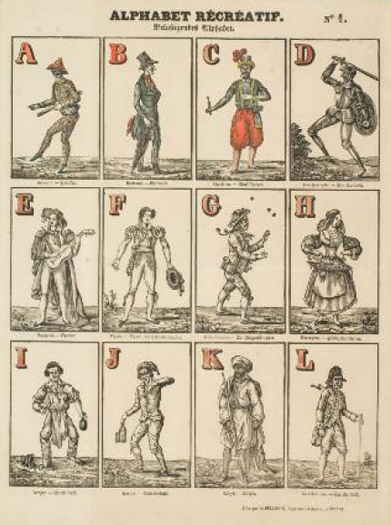
IHS: Oh, I think so.
WHH: The other significant one being at the Wellcome Library in London, and perhaps there are one or two others in Europe. The Museum has a wonderful collection, and I’m happy to be able to add to it to improve it.
IHS: Well, there are some spectacular things in the collection, and we’ve had fun but also a lot of difficulty trying to figure out which posters we wanted to put in this exhibition.
WHH: That’s a good position in which to be. You know, I look upon these posters as having medical interest, but they’re of interest in many other ways as well. I once called in Andrea Immel, the director of the Cotsen Children’s Library at Princeton University, to take her pick of my duplicates. She then put together an exhibition of these prints, including some imagerie populaire they already had in their collection. At the exhibition’s opening, a professor from New York University gave a talk in which I was introduced as the donor of most of these prints. So after the talk, while we were looking at the exhibition, a physician and his wife came over to me, and he said, “I don’t understand what’s medical. You’re supposed to be a medical-print collector.” I replied, “Well, let me show you,” and we went to look at a print that showed the first half of an alphabet that Épinal had printed. The title was Alphabet récréatif — A is for apple, B is for baker, C is for charlatan. “See,” I said, “there’s a charlatan. It has a medical connection, and therefore I want the print.” But although the theme is medical to me, it’s not to the children’s library. This is exactly what happens elsewhere: people can look at many of these posters and see things that make them interesting because of what the artists did, irrespective of what they were trying to sell.
IHS: People ask me all the time, “What’s your favorite thing in your department’s collection?” And I never am able to answer because it changes probably several times a day.
WHH: Well, that’s easy, because the answer I usually give is, “The last object I acquired is my favorite thing.” It does change — I think many nonmedical prints are fantastic, but for me, medicine and pharmacy have been an organizing principle and a focus. If it were not for that, I would want to buy everything in sight, which is not a good idea. For me, it’s been wise to have picked something that enables it all to hang together.
IHS: But artistic merit has played a role?
WHH: Oh, indeed. For example, there’s a Louis Raemaekers poster on the evils of syphilis that is just fantastic — so powerful in its imagery. The von Stuck hygiene poster from 1911 is also great.
IHS: Was it unusual for you to acquire many prints at a time, as you did with the French collection?
WHH: Yes. Normally, I’ve added to my collection one or two objects at a time. It’s been rare that I’ve acquired other collections en masse. Pierre Julien’s collection is a great exception, and I was fortunate in getting it. After Pierre’s death, his daughter asked me, “What am I going to do about this print collection?” I said, “Call in Paul Prouté, the dealer, and he will make an offer.” When I saw her a few months later, I asked her, “What did Prouté say?” And she said, “He refused to make an offer for it.” Pierre, like me, in many ways, was interested in the image, and in the portfolios where he had organized his prints there were newspaper cuttings, magazine pages, cards. The Prouté people simply threw up their hands: they didn’t want to bother with this stuff. After this I went to look at the entire collection. I spent twelve hours going through it, because even though I had seen Pierre frequently over the years, I’d never gone through his whole collection. I looked at everything, even the saints, and realized there were many objects I didn’t have, so I made what I thought was a fair offer, which they accepted. The collection arrived in New York on an Air France plane and was dumped on the pavement in front of my apartment in three huge crates. We couldn’t get the crates in the apartment, so I had to hire four workers to pry open the crates and carry up the portfolios.
IHS: About how many things were in that collection?
WHH: There must have been five or six thousand, including lots of duplicates — duplicates upon duplicates. I may have added about 25 percent more prints to what I already had. And there were some wonderful ones, some very interesting objects that I had never seen.
IHS: Is there anything else you’d like to talk about?
WHH: Well, we haven’t discussed other major collections. In the beginning, I went not only to Ding at the Museum but also to the National Library of Medicine in Bethesda, Maryland, which had a good medical-print collection from which I made a lot of notes. I also went to the Fry Collection at Yale University, and to the Wellcome Library in London, where the curator then was a woman named Dr. Renate Burgess, who let me go through all their medical-print files. Today you can’t do that. Prints are brought out one at a time. Is that a change for the better? Yes, for the future. But for the collector, no. I also met other collectors in the beginning. Gerald Rodnan, a rheumatologist from the University of Pittsburgh, collected prints about arthritis, rheumatism, and gout. I would go to print shops in New York and Paris with him.
IHS: I remember Maurice Rickards, too.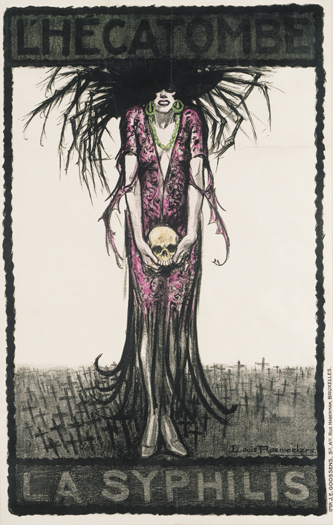
L’hécatombe — La Syphilis, Louis Raemaekers (Dutch), 1922. Color metal relief print
WHH: Maurice Rickards was a very good friend. He began an ephemera society in London, and he wrote an essay in the exhibition catalogue we published —The Picture of Health. He was a wonderful friend. He wrote a large part of an encyclopedia of ephemera that unfortunately was not completed at the time of his death. A mutual friend at the University of Reading, Michael Twyman, finished it, and it’s a very good book, a thick book, about all the kinds of ephemera that exist in the world, with articles for each type of object or term. Collecting prints has been good for me. I’ve met many interesting people and have been to many interesting places I never would have gotten to if I didn’t know about the print world.
IHS: Is your collection organized by subject matter? Because that’s one of the things we are constantly dealing with — questions about the subject matter of the Ars Medica Collection. People don’t come in and say, “What do you have by Chéret?” They say, “What have you got on dentistry?”
WHH: Because it’s so large and diverse, I’ve had to do it by size, but I have a finding aid. If you say, “Do you have a copy of French Generals Retiring on Account of Their Health by Gillray?” I can go to the catalogue online, and I can tell you whether I have it, where it is, about what it’s worth, who the artist is, what the date is, all of that. My collection is organized like a warehouse. All the posters are together. All the little things should be together, such as the trade cards. And the larger objects are together. You don’t have to do it by artist or by subject. Frankly, if you come to me and ask, “Do you have X?” I can pull out X. But if you come to me and say, “We want to do an exhibition on gout,” it would take me a while to find what I had about gout. I couldn’t produce it right away.
IHS: Right. We have the same problem.
WHH: I’m one collector, and every collector is different. I do what I do because it’s of interest to me to do it. I think I’m more organized than many collectors — many are disorganized because of space.
IHS: Well, space, but also because of the number.
WHH: Also number, yes. It’s much easier to be a collector of Max Beckmann prints. I could keep my Max Beckmann prints in a few boxes and be happy. But that wasn’t fun enough for me.
IHS: Do you have any advice for new collectors in this field?
WHH: If you get passionate about something to the point that it’s an obsession, that’s the best way to be. That’s the only advice I could give. Anything done to excess is worth doing.
Observed
View all
Observed
By William H. Helfand
Related Posts

Design Juice
Rachel Paese|Interviews
A quieter place: Sound designer Eddie Gandelman on composing a future that allows us to hear ourselves think
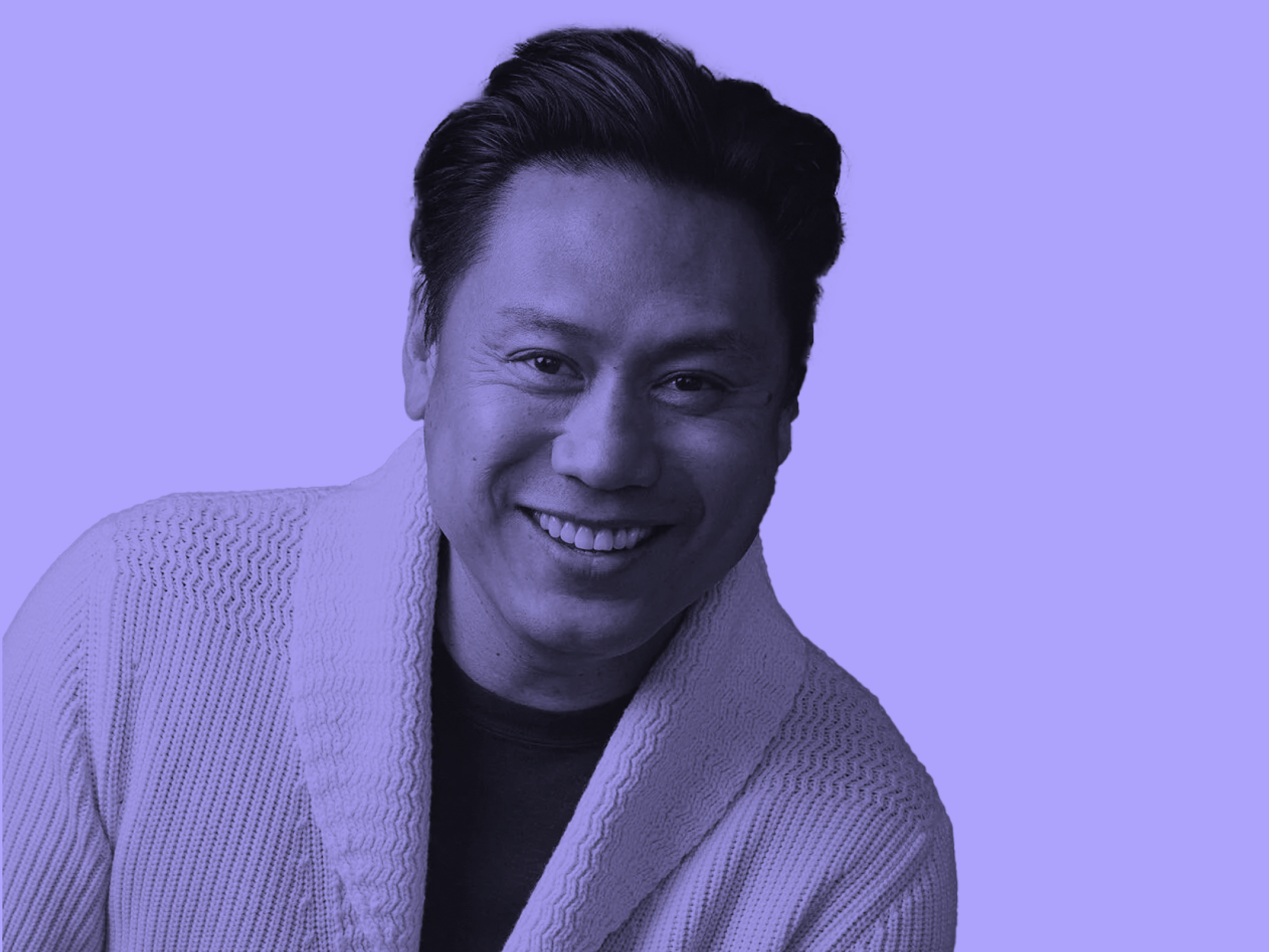
Design of Business | Business of Design
Ellen McGirt|Audio
Making Space: Jon M. Chu on Designing Your Own Path

Design Juice
Delaney Rebernik|Interviews
Runway modeler: Airport architect Sameedha Mahajan on sending ever-more people skyward
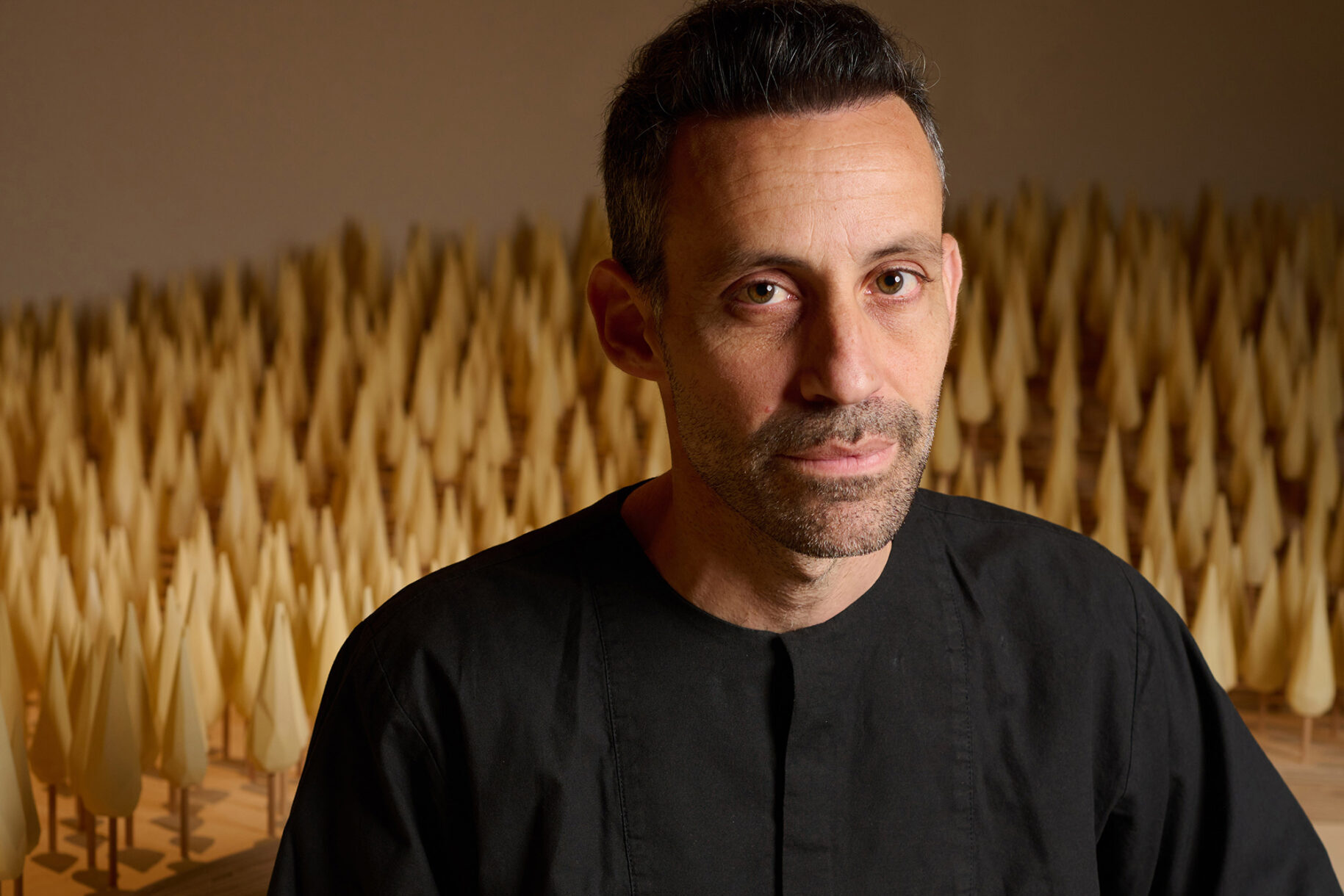
Sustainability
Delaney Rebernik|Books
Head in the boughs: ‘Designed Forests’ author Dan Handel on the interspecies influences that shape our thickety relationship with nature
Recent Posts
“Dear mother, I made us a seat”: a Mother’s Day tribute to the women of Iran A quieter place: Sound designer Eddie Gandelman on composing a future that allows us to hear ourselves think It’s Not Easy Bein’ Green: ‘Wicked’ spells for struggle and solidarity Making Space: Jon M. Chu on Designing Your Own PathRelated Posts

Design Juice
Rachel Paese|Interviews
A quieter place: Sound designer Eddie Gandelman on composing a future that allows us to hear ourselves think

Design of Business | Business of Design
Ellen McGirt|Audio
Making Space: Jon M. Chu on Designing Your Own Path

Design Juice
Delaney Rebernik|Interviews
Runway modeler: Airport architect Sameedha Mahajan on sending ever-more people skyward

Sustainability
Delaney Rebernik|Books

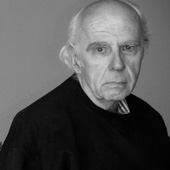 William H. Helfand is author of several books including
William H. Helfand is author of several books including